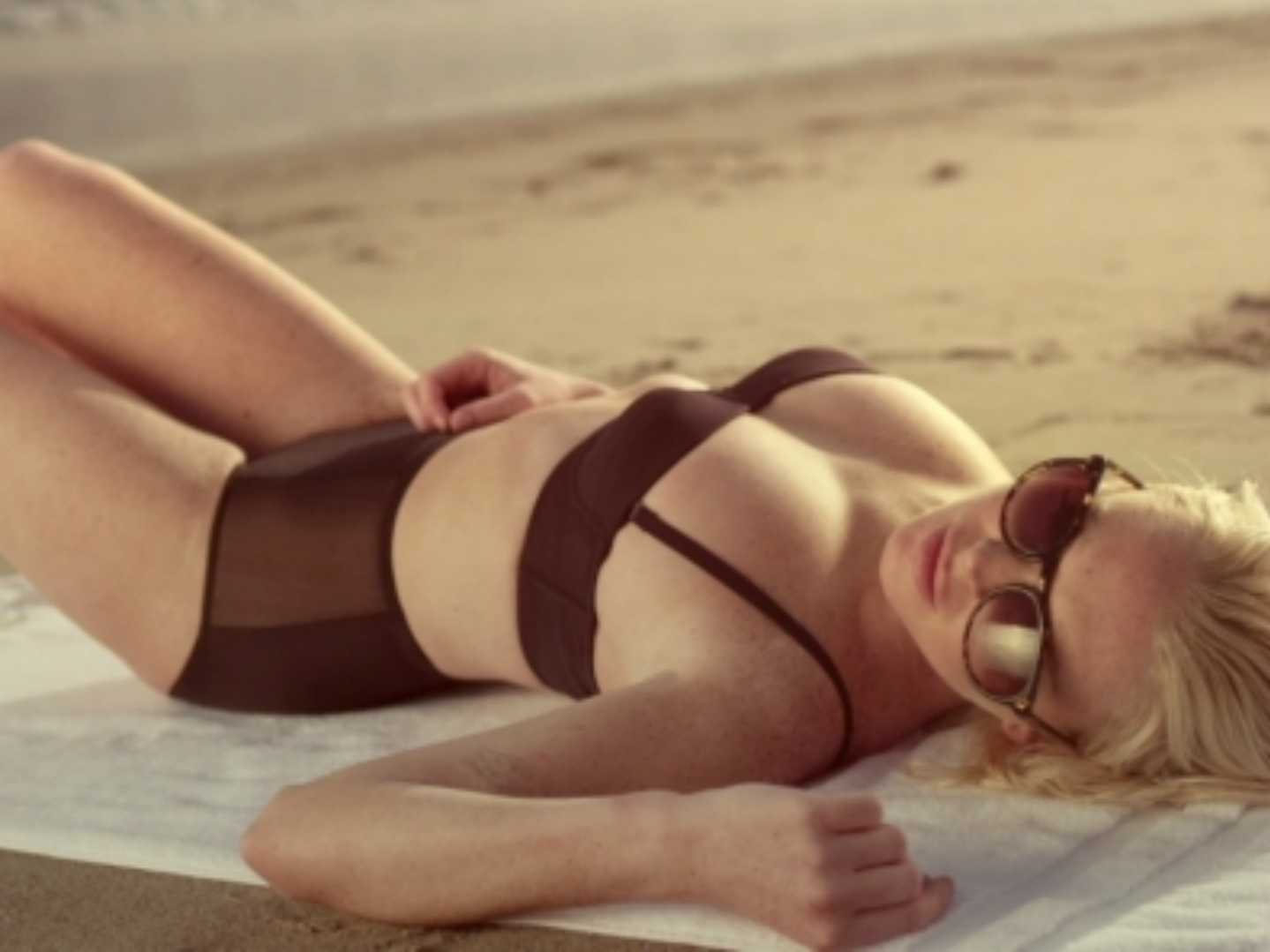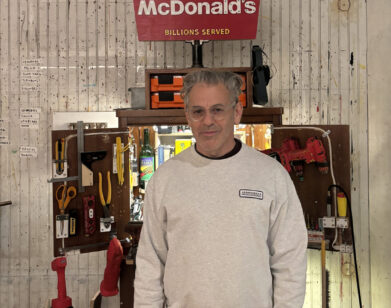Richard Phillips and Lindsay Lohan Make Movie Magic

“There isn’t really anybody who occupies the lens to the extent that Lindsay Lohan does,” says Richard Phillips, who cast the actress in his latest short film, First Point (2012), which will premiere at Art Unlimited, part of Art Basel 2012. “Something happens when she steps in front of the camera. There is this magnetic energy.”
The 5-minute, 34-second film, co-directed by legendary surf filmmaker Taylor Steele, depicts Lohan first during the day—running across the water in a gray wetsuit, lying in repose on the sand in a white bikini—and then at night, in flashes of light that light up her freckled face against a pitch-black background. Modeled on classic surf films such as The Endless Summer (1966), and Free and Easy, an underground documentary filmed in the late 1960s, as well as Lost Highway (1997), a modern take on noir by David Lynch, the footage has something of the feel of a color-saturated screen test by Andy Warhol, or a sequence from The Rape of the Sabine Women by Eve Sussman. “It begins in the tradition of surf films—there is music, and the ocean—and then it goes into this very dark, noir nocturnal dimension,” Phillips explained. “I was exploring the tropes of both forms.”
Shot on both public and private beaches in Malibu, the film also features surfing shots using Kassia Meador, a world-class surfer, as a body double for Lindsay, as well as a score by Thomas Bangalter, one-half of Daft Punk. “It’s not quite film, and it’s not quite video art, and it’s not quite action,” Phillips said. “Thankfully, art has the room for that.”
First Point is not Phillip’s first collaboration with Lohan, who reached out to him after she saw an unauthorized portrait he did of her. Soon after, they began texting about making more paintings together. When a friend asked him to make a film for “Commercial Break,” a series presented by the Garage Center for Contemporary Culture at the 54th Venice Biennale, he asked Lohan to be his subject. The resulting work, Lindsay Lohan (2011), a 90-second clip also shot in Malibu with Steele, is a precursor to First Point.
One of the most striking things about the film is how ethereally beautiful Lohan appears on the screen. Frequently derided by the media, the actress’s unique good looks often become obscured by her public persona.
But with his camera, Phillips somehow makes a claim that despite all of Lohan’s public troubles, she is one of contemporary culture’s great icons. “She’s embodied Marilyn Monroe, and now she’s embodying Elizabeth Taylor, but she’s arguably more beautiful than both of them,” Phillips said. “She is very aware of the way that an icon is constructed, and that’s something that is unique.”
“She’s still alive, and she’s more powerful than ever.”






